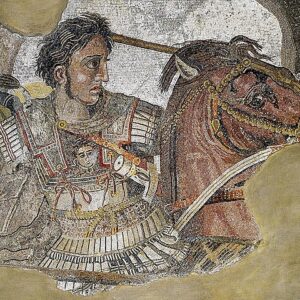Akbar the Great, one of the most illustrious rulers of the Mughal Empire, reigned from 1556 to 1605. His visionary leadership, progressive policies, and cultural patronage transformed the Mughal Empire into a powerful and prosperous state. Akbar’s contributions to administration, art, and religious tolerance laid the foundation for a unified and flourishing empire. Let’s delve into the life and achievements of this remarkable emperor.
Early Life and Rise to Power
Birth and Background
Akbar was born as Jalal-ud-din Muhammad Akbar on October 15, 1542, in Umarkot (modern-day Pakistan). He was the son of Emperor Humayun and Hamida Banu Begum. His early life was marked by instability as his father struggled to regain the Mughal throne, leading to periods of exile and military campaigns.
Ascending the Throne
After Humayun’s death in 1556, 13-year-old Akbar ascended to the throne with the help of his regent, Bairam Khan. Despite his youth, Akbar quickly proved to be a capable leader. Bairam Khan played a crucial role in mentoring and guiding him during the early years of his reign.
Consolidation of Power
Defeating Hemu
Under Bairam Khan’s guidance, Akbar consolidated his power by defeating the Afghan ruler, Hemu, at the Second Battle of Panipat in 1556. This victory solidified his control over Delhi and Agra and marked the beginning of Akbar’s efforts to expand the Mughal Empire.
Expanding the Empire
Akbar continued to expand his empire through military campaigns, bringing large parts of northern and central India under Mughal rule. His strategic marriages and alliances with Rajput princes further strengthened his position. Akbar’s policy of reconciliation and diplomacy with Rajput kingdoms was a significant factor in the consolidation of his empire.
Administrative Reforms
Centralized Administration
Akbar established a centralized system of administration, dividing the empire into provinces called “subahs,” each governed by a “subahdar” or governor. This helped create a more efficient and organized government. Akbar’s administration was known for its meritocracy, where individuals were appointed based on their abilities rather than their birth or religion.
Revenue System
He introduced the “Ain-i-Dahsala,” a new revenue system that ensured fair and efficient tax collection. This system, developed by his finance minister, Todar Mal, was based on the measurement of land and the assessment of agricultural productivity. It stabilized the empire’s finances and promoted economic growth.
Religious Policies and Cultural Integration
Promoting Religious Tolerance
Akbar is renowned for his progressive religious policies. He abolished the jizya (a tax on non-Muslims) and appointed non-Muslims to high civil and military positions. His efforts to promote religious tolerance were groundbreaking and helped in fostering a sense of unity among his diverse subjects.
Din-i Ilahi
Akbar’s interest in various religions led him to create a syncretic religion called “Din-i Ilahi,” which combined elements of Islam, Hinduism, Zoroastrianism, and Christianity. Although it never gained many followers, it showcased his commitment to religious harmony. Akbar regularly held discussions with scholars of different faiths at the Ibadat Khana (House of Worship) in Fatehpur Sikri.
Patronage of Arts and Architecture
Supporting the Arts
Akbar was a great patron of the arts. His courts attracted poets, artists, musicians, and scholars from across the empire. This patronage led to the development of a unique Mughal style that blended Persian, Indian, and Islamic influences. Notable scholars and artists like Abul Fazl and Tansen were part of his court.
Architectural Marvels
He commissioned numerous architectural masterpieces, including the Agra Fort, the Fatehpur Sikri complex, and the Buland Darwaza. These structures remain as symbols of his reign’s grandeur. The architectural style of these monuments reflects a fusion of Persian, Hindu, and Islamic designs.
Military Campaigns and Expansion
Conquering Rajputana and Gujarat
Akbar’s military campaigns were instrumental in expanding the Mughal Empire. He conquered Rajputana, Gujarat, Bengal, and parts of the Deccan, bringing vast territories under Mughal control. His military strategy was characterized by the use of advanced artillery, disciplined troops, and strategic alliances.
Integration Through Alliances
His ability to integrate conquered rulers through marriage alliances and diplomacy played a crucial role in maintaining peace and stability within the empire. Akbar’s marriage to Rajput princess Jodha Bai is one of the most notable alliances that helped strengthen his ties with Rajput kingdoms.
Legacy and Impact
Cultural Contributions
Akbar’s reign left a lasting impact on Indian history. His administrative reforms, religious policies, and cultural patronage laid the foundation for a prosperous and unified empire. The Mughal style of art and architecture flourished under his patronage, leading to the creation of timeless masterpieces.
Preservation of History
His legacy continues to be celebrated, and he is remembered as one of the greatest rulers in Indian history. Akbar’s emphasis on cultural integration and religious tolerance has been a source of inspiration for generations.
Conclusion
Akbar the Great’s reign was a period of remarkable achievements and progress. His visionary leadership, progressive policies, and cultural patronage transformed the Mughal Empire into a powerful and prosperous state. His legacy lives on, inspiring generations to come and reminding us of the importance of unity, tolerance, and cultural integration.



